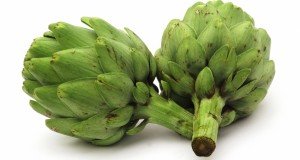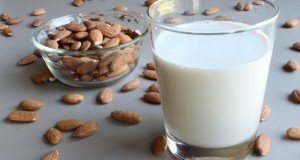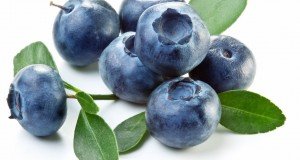Sulforaphane guards against age-related macular degeneration
(NaturalHealth365) Age-related macular degeneration (AMD), a leading cause of blindness in people over 50, affects as many as 11 million Americans. In fact, experts estimate that up to 20 percent of all adults between the ages of 60 and 80 could be experiencing at least the early stages of age- related macular degeneration (AMD) – a frightening statistic, and one which points to the urgent need for improved methods of detection and treatment. Fortunately, for us, researchers say that sulforaphane just might fill the bill.
As strange as it sounds, a group of perfectly ordinary garden vegetables – foods you may already have in your refrigerator – could hold the key to preventing and slowing the development of AMD. Just-published research shows that sulforaphane, an organic sulfur compound found in cruciferous vegetables such as cabbage and broccoli, shows extraordinary potential for protecting fragile retinal cells involved in AMD.
Oxidative stress and inflammation trigger age-related macular degeneration
AMD is caused by inflammation, oxidative stress and damage to the fragile cells in the retina at the back of the eye – particularly, those of the macula (the central area of the retina responsible for central vision).
Excessive exposure to sunlight, smoking cigarettes, poor nutrition and having heart disease or diabetes all increase the risk of AMD – as does being over 60 years old.
Macular degeneration symptoms can include blurry or clouded central vision, “blank” spots in the field of vision and perceiving colors as “washed-out” or faded. Straight lines appearing as wavy can also be a tip-off to advancing macular degeneration.
Experiencing any of these symptoms calls for a prompt visit to your eye doctor for proper diagnosis and treatment.
Researchers say: Sulforaphane is “highly effective” in protecting retinal cells – and even promoting regeneration
Sulforaphane is an isothiocyanate – a type of anti-inflammatory and antioxidant plant compound.
Researchers say that sulforaphane is also anticancer, ramping up the Phase II (detoxification) enzymes in the liver and helping to neutralize carcinogens before they can damage cells.
Recent research has focused on sulforaphane’s potential protective effects on the eyes – and the results are impressive.
In a new study conducted by scientists at the renowned Johns Hopkins University School of Medicine and published in Proceedings of the National Academy of Sciences, scientists exposed human retinal pigment epithelial cells to ultraviolet light in the wavelength of 320 to 400 nanometers.
Cells that had been pretreated with sulforaphane showed significantly less photooxidative damage, leading the team to conclude that the compound may protect against age-related macular degeneration.
The team lauded sulforaphane as “highly effective.” They also remarked that sulforaphane’s normal presence in the human diet is an indication that it is likely to be safe.
And, in another new study published in Current Molecular Pharmacology, researchers noted that macular degeneration is triggered, in part, by a reduction in glutathione – the body’s “master” antioxidant – which is present in every cell.
Scientists have long known that compounds from cruciferous vegetables (namely, sulforaphane) can significantly increase glutathione and cell proliferation. And, as expected, the sulforaphane was effective in helping retinal cells regenerate in the face of oxidative stress.
Sulforaphane shows potential against cataracts as well
The good news about sulforaphane’s protective effects on vision keeps coming.
In a study published in Investigative Opthalmology and Visual Science, researchers exposed human lens cells to hydrogen peroxide – but not before treating one group in advance with sulforaphane.
The team reported that the sulforaphane group had less DNA damage, less cell damage and less cell death. Significantly, the sulforaphane protected against hydrogen peroxide-induced opacification – a thickening of the lens capsule that interferes with light getting through.
The team concluded that sulforaphane protected cells in the lens of the eye against oxidative stress – and could potentially delay the onset of cataracts, a condition which causes clouding of the lenses.
How can I increase dietary intake of sulforaphane?
Consuming organic Brussels sprouts, cauliflower, arugula, kale, watercress, Bok choy and broccoli can all raise dietary sulforaphane levels.
Although these cruciferous vegetables are great sources of sulforaphane, they are all outdone by broccoli sprouts. With 10 to 50 times greater amounts of sulforaphane than mature broccoli, these tender sprouts are the real winner – nutritionally speaking.
When it comes to preserving natural sulforaphane levels, the best way to prepare cruciferous vegetables may be to steam them lightly. In one study, researchers found that steaming broccoli maximized the sulforaphane content and made it more biologically available.
(Note: Frozen cruciferous vegetables may not offer the same benefit as fresh, steamed produce. In one study, researchers found that blanching and freezing broccoli stripped the vegetable of myrosinase – an enzyme which makes sulforaphane available to the body).
Extra tip: To enhance sulforaphane content of frozen broccoli, try adding a small amount of daikon radish – a natural source of myrosinase.
Sulforaphane is also available in the form of nutritional supplements.
While an ideal dosage has not been identified, natural health experts may recommend amounts ranging from 7 mg to 57 mg a day. As always, check with a knowledgeable integrative physician before supplementing.
Protect against AMD naturally with proper nutrition
In addition to eating sulforaphane-rich foods, it’s wise to consume healthy amounts of foods high in carotenoids – especially brightly-colored yellow-orange foods such as organic squash, sweet potatoes, pumpkin and carrots. Foods rich in anthocyanins, such as cherries and blueberries, also support eye health.
Avoid refined sugar – which accelerates the aging process and causes oxidation – along with excessive amounts of caffeine and alcohol (which reduce blood flow to the eyes and cause dehydration) as well as heavily processed foods, which are pro-inflammatory.
Of course, eating probiotic foods such as sauerkraut and kimchi can help promote a healthy gut microbiome – which is closely associated with supporting eye health.
Vitamin C and E, taken along with zinc and omega-3 fatty acids, have been shown to impede the development of age-related macular degeneration. And don’t forget the carotenoids astaxanthin, zeaxanthin and lutein – studies have shown that these eye health supplements are protective against AMD as well.
Finally, protecting your eyes from excessive exposure to sunlight and using blue-light filters on computer screens can help protect against AMD. If you are over 40, experts recommend having a comprehensive dilated eye exam at least every two years.
Although cabbage and broccoli sprouts may seem like unlikely heroes, these humble vegetables – with their stores of sulforaphane – certainly pack a protective punch against eye diseases.
Editor’s note: The NaturalHealth365 Store offers the finest quality broccoli sprouts powder on the market. Click here to order today.*
*And, yes, your purchases help to support our operations at NaturalHealth365.
Sources for this article include:











